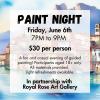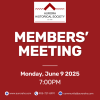The full title of our premiere facility is Hillary House, the Koffler Museum of Medicine. And indeed this is a unique institution of medical heritage.
The House’s status as a museum of medicine rests first on the fact that it served as the site of both the rural medical practice and family home for no less than four physicians of the nineteenth and twentieth centuries.

In the mid-nineteenth century, away from the noise and bustle of Toronto, yet conveniently linked to the city, Aurora proved to be an attractive location for Dr. Walter Bayne Geikie and his family. The Scottish-born Geikie had served as partner to Dr. John Rolph at his new Toronto medical school, but now sought respite from the pressures of teaching and medical practice. At first, Geikie rented an old saltbox-style frame house known as Castle Doan on the north corner of Yonge and Catherine streets. In 1862, however, he determined to build his own house, probably employing the skills of a local builder familiar with the Picturesque Gothic Revival style which was then so popular. Dr. Geikie’s new house was located on the west side of Yonge Street, north of Castle Doan, where Geikie himself could watch its construction in progress. He, his wife Miriam and their two young sons moved there in November, 1862.
Dr. Geikie conducted his medical practice from the front rooms of the house and continued to live here until 1869 when he returned with his family to Toronto. The house was purchased by the young Dr. Frederick W. Strange, recently arrived from London, England, who came to live in Aurora with his wife and infant daughter. Dr. Strange enlarged and renovated the house, but eventually he too felt the call to the city, and sold the house in 1876 to Dr. Robert William Hillary who had first come to the Aurora area with his family from Ireland in 1856.
Dr. Robert William and Annie Fry Hillary lived in the house with their seven children, along with various cousins and aunts and an old family friend, Mrs. Mary Church Hall. In 1890 his son, Dr. Robert Michael Hillary, took over his father’s practice and continued to live and work at ‘The Manor,’ as the house was called. He and his wife, Edith Mussen, had nine children, all born at The Manor.
The Koffler Museum of Medicine has great significance as a resource for the study of nineteenth and early-twentieth century medical practice. It retains its original layout, which provided for a medical examining room and dispensary at the front, with family living quarters behind. Rather than being incidental to the design, as in other examples of houses built for medical practitioners, the spaces used for the practice of medicine here were very carefully planned to provide convenience and privacy for both patients and family members.

In addition to its architectural resources, the site’s unusually large and complete collection of medical records, books, pharmaceuticals and instruments document the practice of medicine carried out within its walls for the better part of a century.














